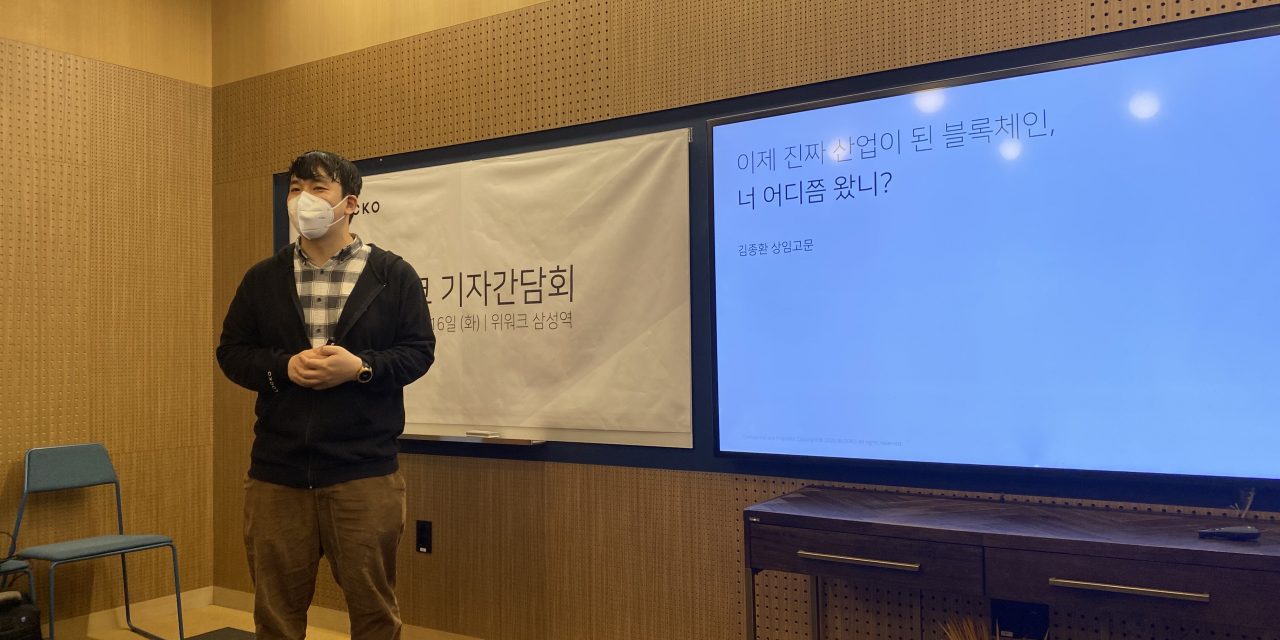Advisor Kim Jong Hwan said the goal of Blocko’s certification project is to eliminate the Government Time Stamping Authority (GTSA).
Blocko held a press conference on the 16th and announced ‘Business Strategy and Blockchain Use Cases’. Here, Kim Jong Hwan, Senior Advisor, introduced the regulations related to blockchain market and discussed ways to revitalize the market.
Kim mentioned Time Stamping Authority (TSA) service that Blocko is currently focusing on. Currently, the most reliable identification service is GTSA from Ministry of the Interior and Safety. “We are developing a blockchain-based electronic document authenticity verification service by utilizing advantages of blockchain. Blocko’s goal is to get rid of GTSA in Korea.” He said.
Blocko is currently building a technology integration fund and an electronic platform and web service integration platform. The technology guarantee fund’s electronic agreement and web service integration platform are the first examples of blockchain-based TSAs in public institutions in Korea.
Through this month’s semi-opening, the service test will be conducted with simple documents such as information consent agreement and integrity pledge. In December this year, the service will be officially launched, supporting more than 120 types of document. It is expected that 50,000 documents will be stored in blockchain TSA in the future.
Companies using blockchain TSA are expected to greatly improve their convenience. Kim Choong Ho, Team leader of Blocko Platform Business Team, said, “As much of the face-to-face process was carried out in a non-face-to-face manner and the application process was simplified, we made it possible to conduct customer-oriented, face-to-face contracts.” He added, “The time required for paperwork will be significantly reduced, and work efficiency is also expected to increase.”
In order to issue an electronic agreement of Korea Technology Finance Corporation, it is necessary to first request the issuance of a timestamp after the original is created. After that, a timestamp token and a transaction to register on the blockchain should be created, and a response message to register the agreement with the integrated server is needed to be generated. There are separate storages for copies and originals in the electronic library. When viewing the original document, users can check the authenticity by viewing the timestamp issuance record.
If a foreign organization requests proof, the original can be verified through a hash comparison. The administrator can track the history of the electronic contract by checking the blockchain query and results with the’document address’.
Kim said, “With Blockchain, it is easy to apply DID (Decentralized Identifier) after the abolition of the accredited certificate. Considering expandability in the future, we are planning to apply blockchain TSA. We will develop a blockchain service with which people can experience the difference.”
번역: 김동우
관련
기사제보 및 보도자료: press@blockmedia.co.kr
▶ 블록미디어 유튜브 바로가기 https://www.youtube.com/blockmedia
▶ 블록미디어 텔레그램 바로가기 https://t.me/blockmedia
▶ 블록미디어 페이스북 바로가기 https://www.facebook.com/blockmediakorea/

